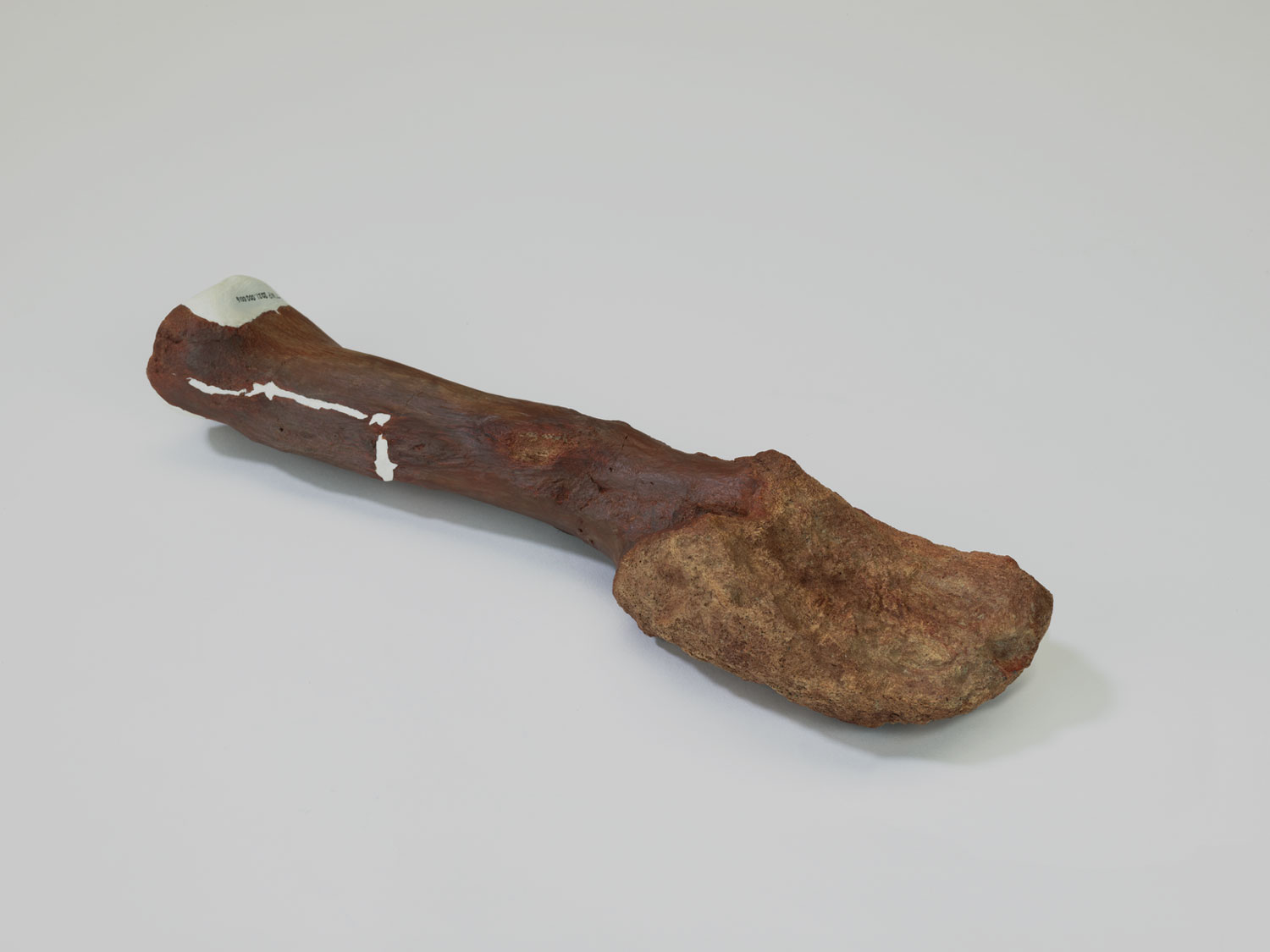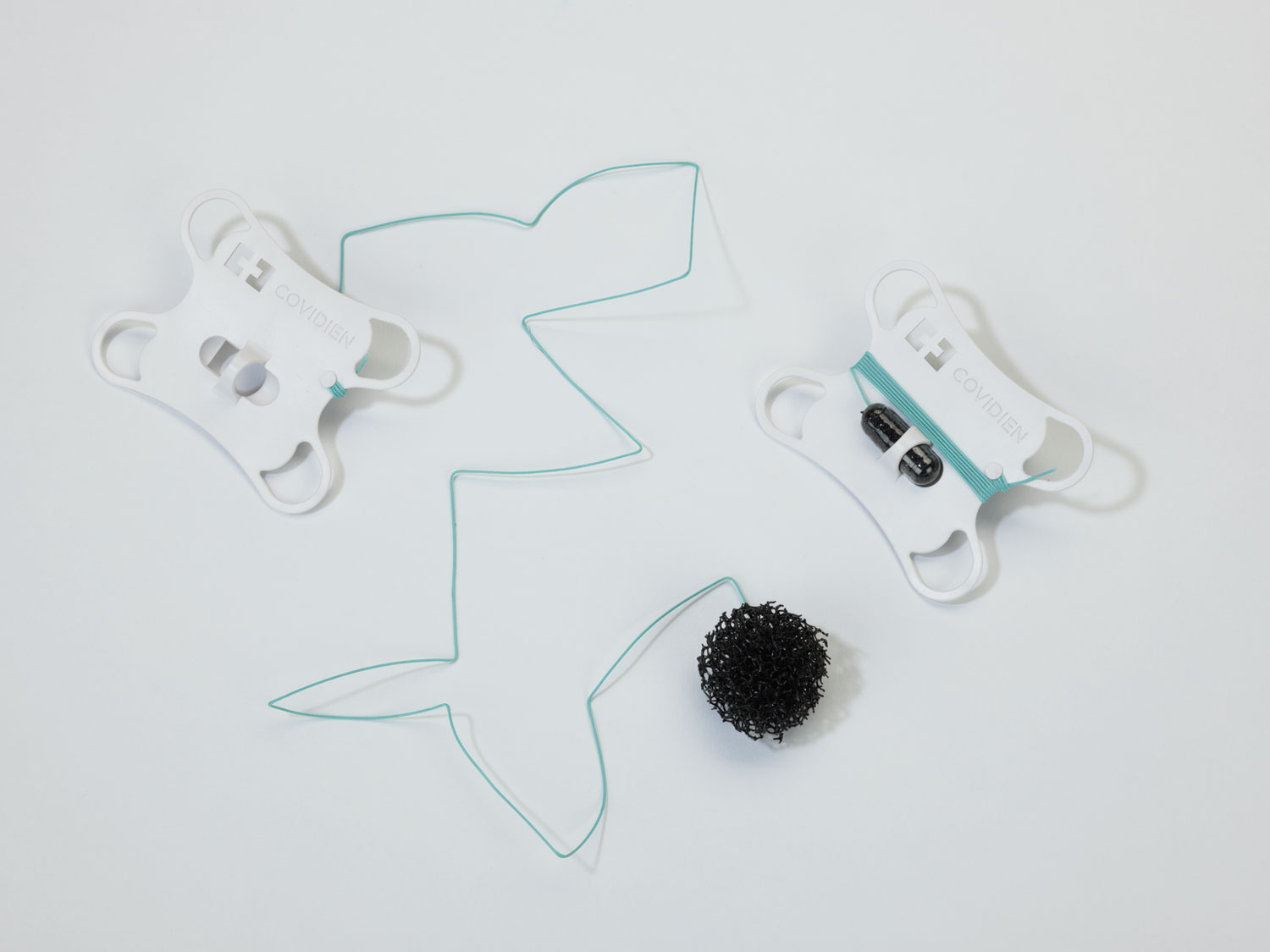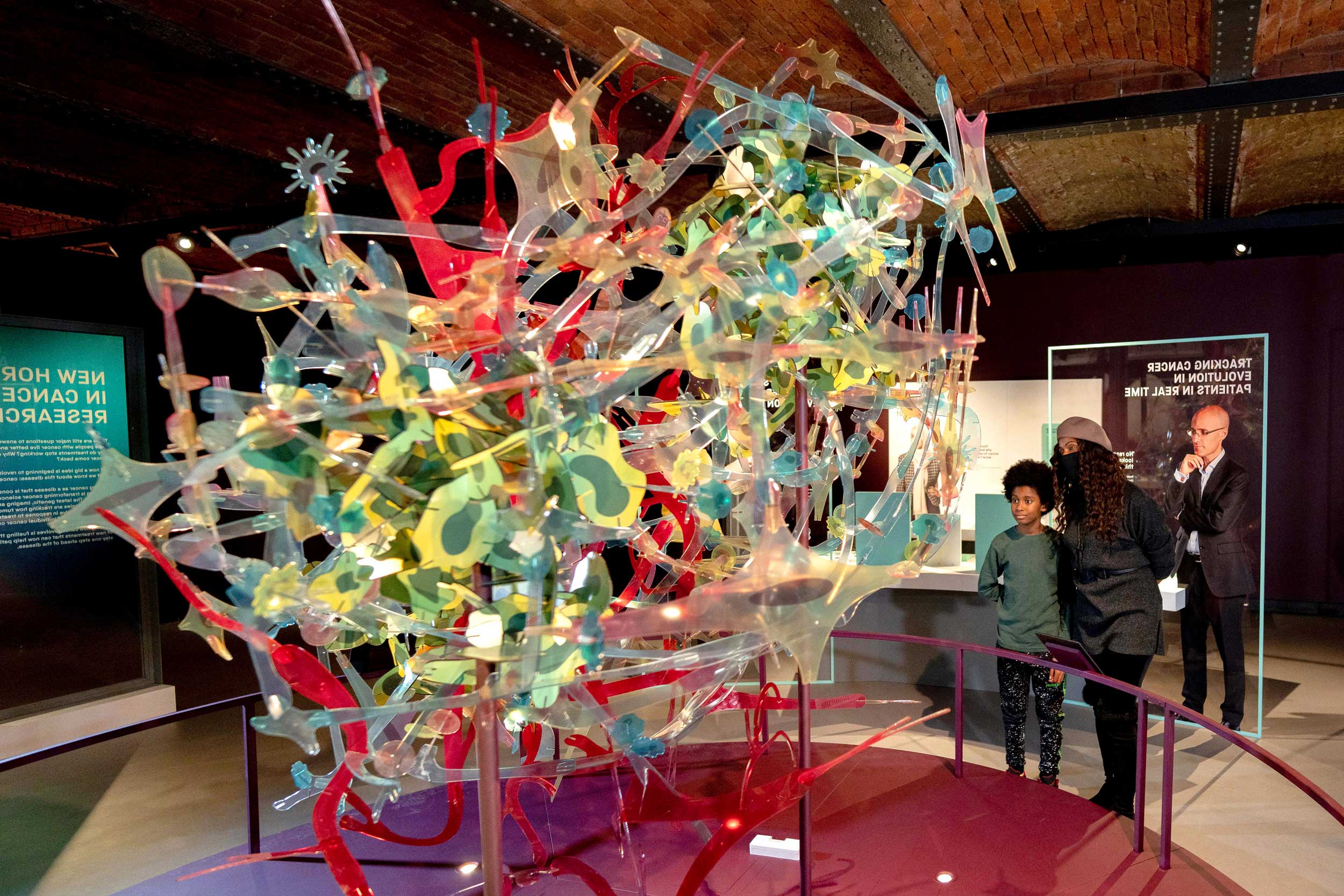Please note, Cancer Revolution: Science, innovation and hope ended on 27 March 2022. To find out what exhibitions and activities are open today, visit our What’s On section.
This world-first, object-rich exhibition reveals the past, present and future of how cancer is prevented, detected and treated. With over 100 objects and 30 personal accounts, the exhibition brings to life the stories of people affected by cancer, together with those who study and treat it, revealing how researchers, clinicians, policy makers and patients are fuelling progress in a powerful expression of shared hope.
Here are the must-see highlights for anyone visiting Cancer Revolution…
Personal stories
No two individuals’ cancer experiences are the same. The exhibition shares a wealth of unique personal experiences and insights of living with the impact of this disease, through a very special Science Museum Group collaborative collecting project. Find out why Ted and John Drummond launched the ‘Beads of courage’ charity after Ted underwent treatment for lymphoblastic leukaemia. Or why a garden fork was so integral to Judy Warner’s recovery from mouth cancer.

Dinosaur bones
Don’t miss the first malignant bone tumour to be identified in a dinosaur fossil, on display for the very first time in the UK. Discovered in 2020 in Alberta, Canada, the dinosaur bone reveals the surprising truth that, rather than being a modern disease, cancer has long affected living things, including dinosaurs and the plants that are around us today.
The bone cancer called an osteosarcoma was found in the lower leg bone of a Centrosaurus Apertus—a horned plant-eating dinosaur that lived about 76 million years ago. Dinosaur experts and doctors experienced in human cancer from Royal Ontario Museum and McMaster University, used high-resolution CT scans to examine the bone and thin sections of it under a microscope to reach a diagnosis. They found that the animal had probably lived with the cancer for some time; the unsmooth part at the right of the shinbone cast indicating signs of bone cancer growth.

Never before displayed objects
See objects that have never or seldom been on display before. This includes a Radium Teletherapy Machine used at the Westminster Hospital in London in the 1930s by Ernest and Frank. On display to the public for the first time in over 60 years, it was part of the first alternative treatment to surgery that could visibly shrink and treat tumours.

Latest technologies
Discover many of the latest technologies and treatments transforming cancer care including the Cytosponge. Designed by Professor Rebecca Fitzgerald and her team of Cambridge scientists at CRUK Cambridge Institute to be a cheaper, simpler and kinder alternative to the intrusive endoscopies (when a thin tube is inserted into a person’s body to collect tissue), the Cytosponge is swallowed like a pill. It collects cells as it is gently pulled back up the tube between the mouth and the stomach, detecting abnormal cells linked to a condition called Barrett’s oesophagus, which can increase the risk of oesophageal cancer.
The Cambridge research team are advancing the diagnosis of Barrett’s oesophagus, a warning for oesophageal cancer, by combining the Cytosponge test with artificial intelligence. These digital tools allow pathologists to detect cancer faster and earlier by helping them to spot details in the cell samples that are usually hidden to the human eye.

Pioneering studies
Be astounded by 10 pioneering studies featured together for the first time, including the work of the CanBuild Project team, who are building tumours from scratch to improve how new treatments are tested. Tumours are ‘rogue’ organs which recruit many types of cells to help cancer grow and spread, so Professor Fran Balkwill and the CanBuild team of scientists are engineering mini tumours that realistically grow and change like human cancers. Their work will help us find new ways to target the cells around a tumour that support cancer growth. In particular, they want to re-create the tumour of a type of ovarian cancer that leads to 70% of all ovarian cancer deaths.
Art
Art plays an important role in revealing what life is like with cancer, while simultaneously showing how something terrible can be transformed into something beautiful.
Take a moment to listen to the premiere of renowned artist Katharine Dowson’s atmospheric soundscape, which features the voices 10 years on of some of the patients included in her accompanying Silent Stories glass radiotherapy mask sculpture art installation. Photography from Nudrat Afza’s Shadow and Light collection, which captures her sister’s breast cancer treatment journey, is also on public display for the first time.
Hear what life is like inside a chemotherapy treatment day unit through an immersive audio soundscape recorded at Tameside Macmillan Unit part of The Christie NHS Foundation Trust. Take a seat on a chemotherapy treatment chair and experience the sounds of the machines and people who would be all around you.
Encounter the complex make-up of tumours up close through a three-metre large scale tumour 3D installation created especially for the exhibition.

Interactive exhibits
Test your understanding of cancer with our interactive digital exhibits. Explore the differences between cancerous and normal cells, take our myth-busting quiz about the causes of cancer, and step into the lab to treat a tumour using different therapies.
Join the conversation
Let’s talk about cancer—share your own experiences and add your comments to our growing wall of HOPE.